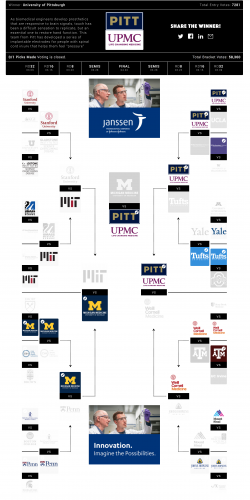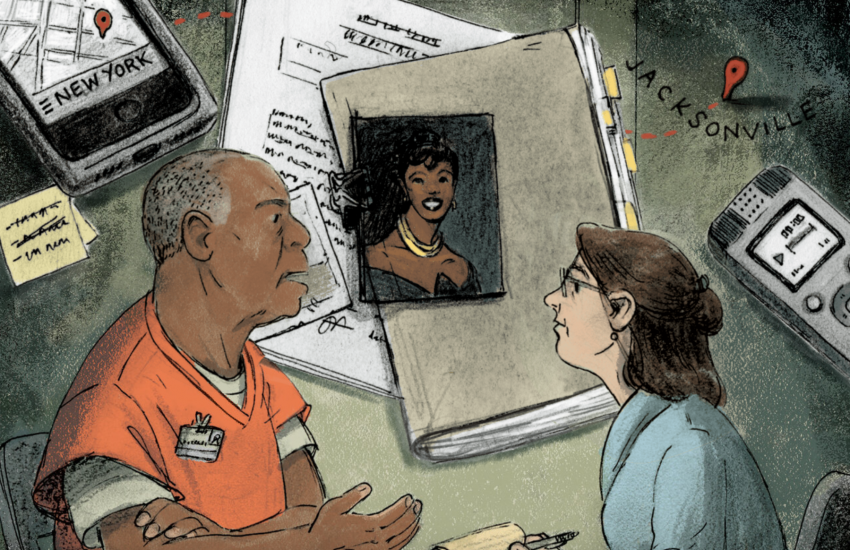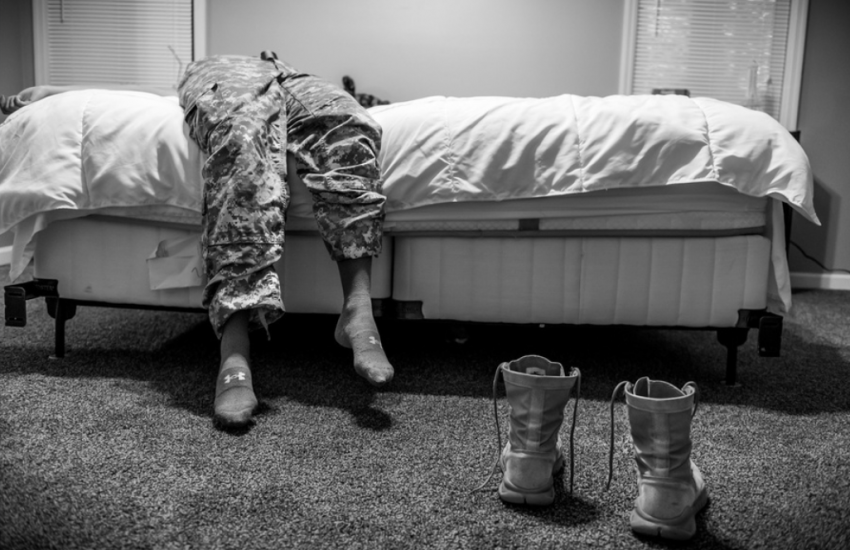How STAT News used March Madness to engage readers and highlight innovation in science
March Madness is a remarkable time in American culture. Even passive basketball fans go crazy constructing brackets, setting-up fantasy leagues, joining heated conversations, and of course watching a good part of the 63 college basketball games. Last March, STAT—the Boston Globe Media-produced health and science site—took advantage of America’s obsession and created its very own competition, dubbing it “STAT Madness.”
The gist? STAT built a bracket of life science and medical institutions across America by having readers vote on which one is doing the most innovative research. The final match-up pitted the University of Michigan against the University of Pittsburgh. Pitt ended up winning it all by a margin of 500 votes while Tufts University won the newsroom’s Editors’ Pick. The month-long competition, which involved the work of several people inside STAT’s newsroom as well as a partnership with Janssen Pharmaceutica, reverberated around Twitter with the #STATMadness hashtag throughout March. By April 2nd, the competition had drawn almost 60,000 people.
Storybench spoke with news editor Megha Satyanarayana about how the newsroom planned the bracket, built the project, and what they learned from their audience.
VOTE VOTE VOTE! Today's the last day to cast your vote in the #STATMadness 2017 bracket. Who's your science MVP? https://t.co/9rqBEdQ3qp pic.twitter.com/rcfEv8twZl
— STAT (@statnews) March 9, 2017
What was the process of creating STAT Madness?
At STAT, we focus on life sciences and everything from the pharmaceutical industry all the way to how healthcare is delivered in the U.S. We were considering how to celebrate really good ideas and innovative science. And given the time of the year when we were having these meetings, [March Madness] was coming up.
The bracket idea was explored for two reasons. One, we wanted to allow folks in the general public and in the sciences to tell us what they thought was the best innovation, so we wanted to be interactive in that way. Two, we also wanted an opportunity to see what was out there in 2016 that was pushing the envelope in life sciences.
How long did it take to put it all together and launch the application?
First meetings were about the end of October and beginning of November. We got everything set up as good as we could during the holidays, when we opened the contest to entries. We took entries for the contest February 15th, and reviewed them for about two weeks. Then, we loaded the bracket to launch on March 6th. It ended on April 2nd.

How many people were involved in this project?
Several reporters were involved, especially the ones who put together our newsletters. And multiple editors in the office helped with executing parts of the contest, including choosing the “Editors’ Pick,” the innovation that our newsroom thought was the best of the bunch.
Our multimedia team was heavily, heavily involved, including our social media manager [Taylyn Harmon]. We knew we would be driving a lot of audience participation via social media and so our social media manager had a fantastic plan to engage people in both entering the contest and voting. We also had graphics and video help. They made animations and other types of content that would do well in social media for us.
Obviously, our business department was also involved in this project from the start.
What about choosing the institutes that made it into the “tournament”?
Brackets must go in a certain, basic form. We opened up nominations to pretty much every medical school, any research institution, and any institution that is doing life sciences work.
We created a very simple Google form. Part of their entry was to provide us with the research paper that talked about the innovation, and they also had to give us a summary of the innovation.
From there, it was just a question of figuring out per school which was the best entry, the most interesting, most innovative to us and putting it in the bracket. We originally paired similar discoveries, ones in a similar vein. People would be voting on similar technologies or innovations that affect a similar disease or attack a similar problem.
So, for example, we had a match-up regarding a specific type of cancer. We also had match-ups involving global health and drug discovery. That was the initial 32 and then from there, we let people vote for a few days and then we advanced to the next round. We highlighted what people were doing with their different innovations until we were down to our final two contestants.
We wanted schools to send more than one entry because innovation means a lot of things in a lot of different fields, and we wanted to give them opportunities to send what they thought were their best options.
Congratulations @UPMCnews for winning #STATMadness! Read about their innovative idea according to STAT readers: https://t.co/cgxLjiDtAJ pic.twitter.com/vI9OPVAeaO
— STAT (@statnews) April 3, 2017
Why did you use Brackify?
We went with Brackify because, internally, we knew how it worked a little better than some of the other options that were out there. Also, we were trying to put this together very quickly.
It is something that the Boston Globe uses and people understand it really well. So, we thought it would be easier to use a known entity. Not that other bracket software out there isn’t perfectly fine, this was just known and available.
What did STAT learn about the audience from this project?
One of the great things that we learned is that we could get folks to talk about science on Twitter in a way that doesn’t always happen. We had a lot of success with Twitter, with scientists coming out and talking about their research on Twitter with the general public. We thought that was a really nice thing that happened. Scientists whose work was nominated for the contest appreciated the opportunity to talk about their work in an open forum such as this, and reach out to people and say “this is why the stuff that we do is important.”
We also appreciated the effort a lot of the schools made to talk about the contest to their students, their staff, their alumni. And we really appreciated the opportunity here at the office to see the depth of the kind of research that goes on in the life sciences. For us, in our first year of the contest, this was just a fantastic snapshot of what is out there.
“I can feel just about every finger—it’s a really weird sensation.” Vote for @UPMCnews/@PittTweet: https://t.co/zxZXCQutRr #STATMadness pic.twitter.com/9VQH5bvcsX
— UPMC (@UPMCnews) March 12, 2017
What was the newsroom’s overall impression of the project?
It is hard to have expectations when it is your first year. You want to do as well as you possibly can and I think we did. We had close to 60,000 votes for the bracket, which we thought was fantastic. We had a huge swath of entries from all the different types of life sciences and fantastic participation from schools from the round of 32 all the way down to our final two.
So, can we expect more Madness in the future?
Absolutely. I think our overall feeling was that this first year was a fantastic success and we look forward to entries we are going get from 2017. We really hope that schools are thinking about this and that we will have an even larger pool to choose from. As far as an opportunity to STAT, we were really very pleased.
- SXSW: ‘Excel is okay’ and other tweet-size insights for data journalists and news nerds - March 17, 2018
- NICAR: Data stories from last year that you could be doing in your newsroom - March 13, 2018
- How to scrape Reddit with Python - March 12, 2018





